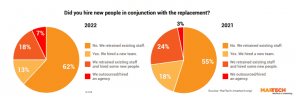If you’re looking for reasons for the failure of Silicon Valley Bank, which was taken over by the FDIC last Friday after one of the biggest bank runs in U.S. history, one obvious culprit is the fact that the bank violated one of the elementary rules of finance: Always diversify. SVB became the 16th-largest bank in the country by turning itself into the financial institution of choice for Silicon Valley venture capitalists and the companies they funded. But in doing so, it also made itself exceptionally dependent on the health of the tech industry and on the choices of a relatively small number of VCs and company founders. That dependence is what made the bank so successful. It’s also what helped destroy it.
It’s hard to overstate what an unusual bank SVB was. At its peak, it had more than $200 billion in assets, but it had few individual customers and fewer than 38,000 corporate accounts. And its customer base was highly undiversified: Most of its deposits came from VC funds and tech and life-science companies, and most of its loans went to those companies too. This was a conscious choice by SVB: In fact, it often required companies to bank with it exclusively as a condition of getting funding.
This was great for SVB during the boom years of 2020 and 2021: Its total deposits more than tripled in two years. But when the tech boom turned to bust at the end of 2022, SVB’s customers—many of whom were startups that were not making money but spending it—started to withdraw money rather than deposit it, burning cash in order to stay afloat.
This would not have been a problem, except for one thing: SVB had taken a lot of those deposits in 2020 and 2021 and bought long-term treasuries and mortgage-backed securities that carried very low interest rates. This wasn’t a totally reckless decision: None of the assets it bought were at risk of defaulting. But it did expose SVB to a lot of risk if interest rates spiked because when interest rates rise, bond prices fall.
And that, of course, is exactly what happened in 2022. The result was that by the end of 2022, SVB was sitting on $16 billion in unrealized losses on its investment portfolio, meaning that on a mark-to-market basis, its assets barely covered its liabilities. (Had SVB been a bigger bank, it would have been subject to tougher regulations and stress testing that would likely have kept it from getting in such a big hole. But the bank had successfully lobbied, in 2018, for rolling back those rules when it came to banks of its size.)
Even so, SVB had more than enough liquidity to cover a normal rate of withdrawals, and last week it announced a plan to bolster its cash position, selling off some of its bond portfolio and raising capital by selling shares. That panicked investors (when a bank says not to worry, it makes you wonder what you should be worried about). But if SVB had had a more traditional, diversified customer base, it might well have been able to weather the storm. Instead, its reliance on Silicon Valley, and in particular on the VC community, came back to bite it.
Unlike a typical bank’s customers, most of SVB’s customers belong to a relatively tight-knit community. They’re obsessive users of social media. They talk to each other, both online and in the real world. They tweet, and retweet each other. In the case of VCs, there are not that many of them, and they exert an outsize influence on the companies they fund. And as we know from the long history of boom-and-bust cycles in tech, they’re prone to herding—rushing into similar investments at the same time, and then fleeing them when sentiment changes. So when they started to get worried about SVB’s financial health, the situation was almost perfectly designed for a bank run.
SVB’s executives seem to have hoped, naively, that the relationships the bank had built with the VC and startup community over the years would get them through this rough patch. On Thursday, according to The Information, the bank’s CEO, Greg Becker, told a group of top VCs that the bank would be fine unless everyone panicked, and said, “I would ask everyone to support us just like we supported you.”
But that was a futile request. (They’re called venture capitalists for a reason.) That same day, Peter Thiel’s Founder Fund advised companies in its portfolio to pull money from the bank, and a host of other venture funds followed suit. And it wasn’t just VCs. According to a Twitter thread by Alexander Torrenegra, CEO of Torre, an online job site, more than 200 tech founders were in a group chat Thursday morning talking about SVB’s problems, with people saying there was “Only upside, no downside” to pulling your money out. (The downside, of course, was that the bank would go under, but for obvious reasons no one cared.) Once a few companies started running for the door, it was almost inevitable that everyone would try to flee. And once that happened, SVB was toast.
SVB fell victim, in that sense, to a fast-paced bank run of the social-media age—a bitterly ironic fate for a bank that had financed so many tech companies. And its demise was accelerated by another digital innovation: online banking. In the old days, taking your money out of the bank and transferring it to another bank was a time-consuming hassle, which meant banks had more time to forestall disaster. Today, you can do all that with a few clicks on your phone. Depositors and investors tried to pull out $42 billion—almost a quarter of the bank’s total deposits—on Thursday. The next day, regulators shut it down.
SVB’s collapse shouldn’t necessarily have had any real implications for other banks, since its problems—an undiversified customer base, a huge percentage of its deposits uninsured, and a heavy reliance on corporate/VC customers (who are more likely to switch banks)—were mostly idiosyncratic. But fear isn’t logical, and so, even though SVB’s demise seemed very much the result of its own bad decisions and its customers’ quick exit, federal regulators came up with a plan this weekend to forestall similar bank runs at other regional banks. All SVB depositors will be made whole, and the Fed has set up a lending facility that will allow banks sitting on unrealized losses to borrow money to meet any withdrawals.
That may well be enough to put a halt to the panic (though a big sell-off in regional-bank stocks Monday morning suggests it’s not over yet). But if there’s a lesson in SVB’s demise, it’s that medium-size banks should be subject to the same capital rules as big ones, and that banking regulators should pay attention to how much exposure banks have to a single industry. SVB was, after all, wrecked by the very industry that had made it rich, coupled with a foolish investment strategy. And the same is true, on a smaller scale, of the two other bank failures we’ve seen in the last week: Silvergate and Signature Bank of New York, both of which were highly dependent on the crypto industry and got into trouble when crypto businesses pulled out billions in cash after the FTX crash. It turns out that putting all your eggs in one basket works great—until the bottom drops out.
(10)









